Text data of variable length are being injected into tableview cell labels. In order for each cell height to be properly sized, I have implemented in viewDidLoad():
self.tableView.estimatedRowHeight = 88.0
self.tableView.rowHeight = UITableViewAutomaticDimension
This estimates the height to be 88.0 pixels and should resize the height automatically if larger. It works perfectly for cells that have yet to be scrolled to (as UITableViewAutomaticDimention is called upon scrolling to the cell), but not for the cells that are initially rendered onscreen upon loading the table with data.
I have tried reloading the data (as suggested in many other resources):
self.tableView.reloadData()
in both viewDidAppear() and viewWillAppear() and it did not help. I am lost.. does anyone know how to render the dynamic height for the cells loaded initially on screen?

